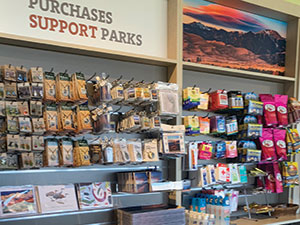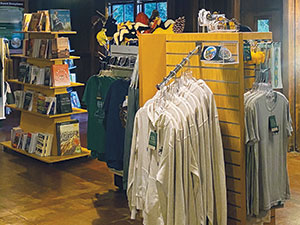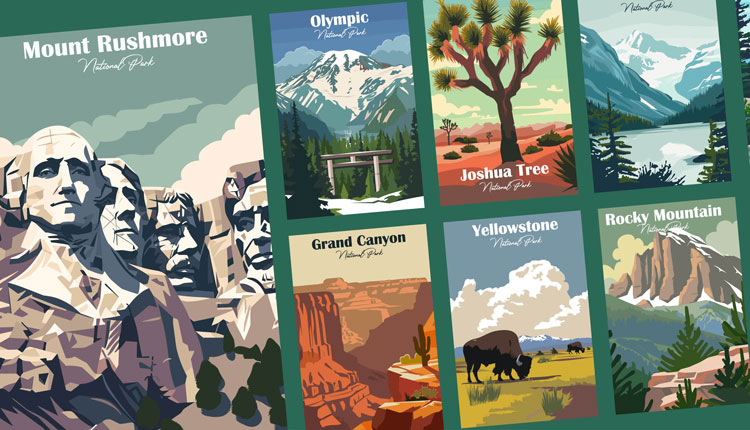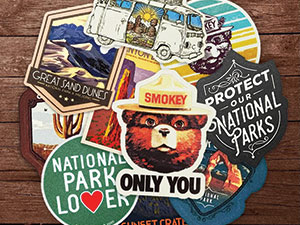Park retailers put immense thought into the merchandise at their shops, making sure souvenirs big and small connect well to these awe-inspiring destinations.People can’t seem to get enough of the park these days — the National Park Service reported in March that the total number of recreation visits to national park sites hit almost 332 million in 2024, breaking a record that was last set in 2016. Total visitation to these sites has been steadily rising since 2021, according to NPS data.
National parks also dominated U.S. News & World Report’s list of top places to visit in 2025. The latest list included Glacier National Park, Yellowstone National Park, Grand Canyon National Park and Yosemite National Park. Vacationers appreciate these destinations for their jaw-dropping landscapes and calm environment that helps people to escape the busyness of everyday life.
Behind the beautiful scenery at national and state parks, retail plays a supportive role in celebrating and in many cases financially giving back to these awe-inspiring destinations.
The Western National Parks Association, headquartered in Tucson, Arizona, partners with 72 national park sites in several states, managing retail shops at many of these sites.
 Park-themed jewelry, stationery and other souvenirs all support the parks.
Julie Thompson, senior content and communications manager at WNPA, says much thought goes into the merchandise at these storefronts.
“We work hand-in-hand with the National Park Service to develop products that align with the parks’ interpretive themes, their messages, their education. We ensure each product is reflective of the parks’ unique histories, cultures and landscapes. And 100% of our net proceeds directly benefit the park,” she says.
Given that most parks are free attractions or just require a minimal admission fee, having retail that gives back is extremely important for many of these destinations.
Wearable and collectibleBoth wearable and collectible souvenirs seem to strongly appeal to guests at national and state park stores.
“Apparel is the No. 1 seller, and I don’t think that’s a new trend. That’s been the case for a while,” says Teresa Inman, senior buyer for Aramark Destinations, which manages retail for four properties, including Olympic National Park, Badlands National Park, Pikes Peak and Union Creek Resort outside of Crater Lake National Park.
Inman explains that T-shirts and sweatshirts are like multipurpose souvenirs — customers might purchase a sweatshirt if they get cold while visiting the park, but then they will also take that apparel home with them to remember their visit.
“Apparel truly is something visitors will have a connection to, and I think apparel will always be a strong seller,” she says.
 Redwood Parks Conservancy has hoodies ready for people who want a souvenir and something warm for their hike.
“Apparel is huge here,” she says. “The weather is so unpredictable, and it can get cold and foggy, so we’ll sell outerwear, sweatshirts.”
Collectible souvenirs are also staples for park stores. Inman adds that plenty of people are collecting stickers from park stores these days, showcasing all the spots they have visited on their laptops and drinkware. She explains that stickers are a great consumable souvenir.
“You can put it on a water bottle, then when you need to replace that water bottle, you get a new sticker,” she explains. “The $3 to $5 price point for stickers is nice. People don’t think too hard about spending that amount.”
Thomas says customers also love collecting handmade mugs from each of the Redwood Parks Conservancy gift shops, too. She says the shops come out with new designs each year.
“They are handmade, beautiful mugs,” she describes. “I have a kitchen cabinet full of them! Those are products that have endured the test of time and just keep selling more every year.”
Accurate remindersIn addition to apparel and collectible souvenirs, park visitors want their souvenirs to serve as specific reminders of the destination that they visited. Rather than merchandise featuring generic park or camping themes, retailers say customers often prefer products that have a name drop or feature imagery common to the park they represent.
Thompson says WNPA is always making sure its merchandise is historically, culturally and ecologically accurate.
“For example, at Carlsbad Caverns, we might have bat plush, but we want that bat plush to be just like a bat you’ll see in those caves, not a generic bat,” she explains.
Customers are going bananas for banana slug plush at Redwood Parks Conservancy’s stores these days!
“Banana slug plushies and merchandise are big sellers,” shares Thomas. “I’ve expanded our line of banana slug merchandise since I became retail director. I think it’s something different and interesting to people. You only see banana slugs in these forests, and it’s not a normal thing people will see when they go home.”
Locally made merchandise is also a way for park retailers to stock merchandise unique to the area, especially when that merchandise connects to the park as well. “You have to find the right local merchandise,” says Inman. “It still has to connect to the park, the history, the experience. It’s about finding the right thing that resonates with the park’s story.”
Purposeful purchases While visitation to parks continues to boom, national park retailers are unsure how things will go in the upcoming summer season as the federal government announced layoffs for National Park Service workers.
Thomas admits that there are some difficulties for the National Park Service this year, but she notes that Redwood Parks Conservancy’s mission and efforts will stay the same.
“We have an amazing partnership with the National Park Service, California State Parks, Bureau of Land Management and the U.S. Forest Service partners,” she says. “There are challenges, but we’re working through them. There are predictions that more people will come to the parks this year, but who knows! The whole point is that we’re here for our parks. For me as the retail director, I want to be able to keep my stores open, and that financially helps the parks.”
So what’s the key to running successful gift shops at the park these days?
“It’s really just staying in tune with the visitor centers, our visitors and park partners,” says Thomas. “Be available for visitors. And have constantly changing offerings to keep things fresh and innovative.”
Inman adds that a mix of unique souvenirs and a warm store environment are key elements for park retail.
She says, “With retail in the parks, it’s not just about selling souvenirs — it’s sharing the park’s story and helping people find items to commemorate their trip.”
|




